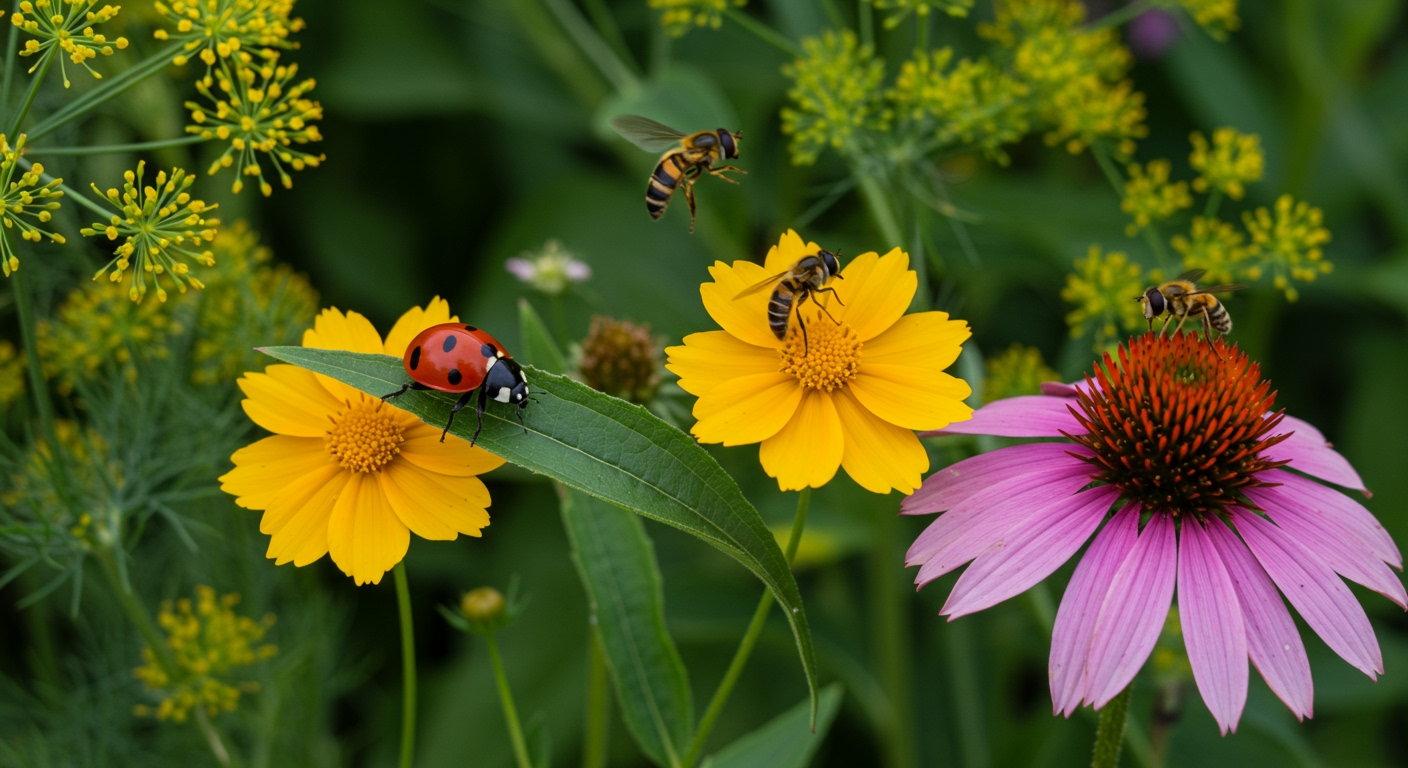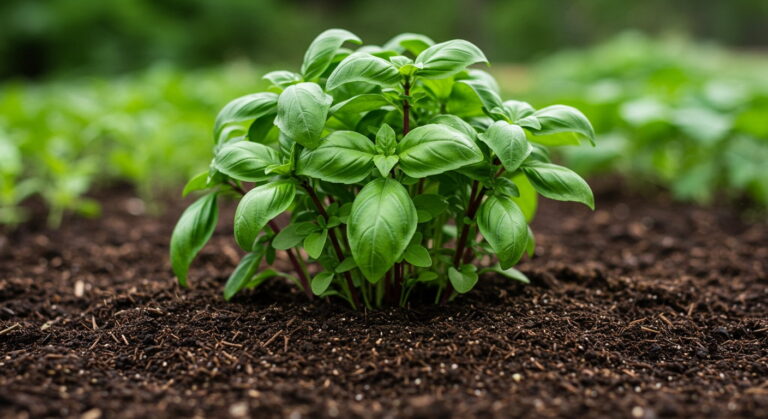Beneficial Insects For Your Garden
The Unsung Heroes: Harnessing Beneficial Insects for a Thriving Garden
In the quest for a vibrant, productive garden, many gardeners initially turn to chemical solutions for pest control. However, a deeper understanding of garden ecology reveals a more sustainable and effective strategy: welcoming beneficial insects. These invaluable allies maintain plant health, pollinate crops, and naturally suppress troublesome pests, often outperforming synthetic products. Embracing an ecosystem rich in beneficial insects transforms your garden into a self-regulating haven, fostering robust growth and biodiversity.
This comprehensive guide explores the diverse roles of beneficial insects, identifies key species, and provides practical strategies to attract and sustain them. By shifting from eradication to integration, gardeners can cultivate a resilient, harmonious natural system.
Understanding Their Crucial Role in Garden Ecology
The term “beneficial insect” encompasses arthropods that positively contribute to the garden. While some insects are pests, many others provide essential services, often unseen. Recognizing these helpful species is the cornerstone of Integrated Pest Management (IPM).
Beneficial insects primarily serve as predators, parasitoids, or pollinators. Predators actively hunt and consume pests, significantly reducing their numbers. Parasitoids lay eggs on or in pests, with their larvae eventually killing the host. Pollinators, vital for plant reproduction, transfer pollen for fruits, vegetables, and flowers. Relying on broad-spectrum pesticides indiscriminately harms both pests and beneficials, disrupting this delicate balance and often creating a cycle of dependency. Encouraging beneficial insects, by contrast, establishes a self-sustaining system, promoting long-term garden health.
Categories of Garden Allies: Predators, Parasitoids, and Pollinators
Understanding the distinct ecological roles of beneficial insects helps in effectively inviting and supporting them. Each category plays a vital part in maintaining garden health and productivity.
Predators: The Garden’s Active Hunters
Predators are the primary defense against many common garden pests. Both adult and larval stages of these insects actively seek out and consume other insects, often devouring large numbers. Their diet includes aphids, mites, scale insects, whiteflies, thrips, and various insect eggs.
Parasitoids: The Silent Eliminators
Parasitoids use a specialized strategy: a single larva develops on or within a single host pest, ultimately killing it. Adult parasitoids often feed on nectar or pollen, but their larvae are the effective pest controllers. Many are tiny wasps or flies, targeting aphids, caterpillars, beetle larvae, and whiteflies.
Pollinators: The Garden’s Essential Fertilizers
Pollinators, while not directly controlling pests, are crucial for the reproduction of countless plants, including many fruits, vegetables, and flowers. Bees, butterflies, moths, and some flies and beetles transfer pollen, ensuring successful yields and fostering biodiversity. Many also overlap with other beneficial roles, such as predatory hoverfly larvae.
Top Beneficial Insect Predators for Your Garden
These effective predatory insects can significantly reduce pest pressure. Recognizing their appearance, life cycle, and preferred prey will help you identify and encourage them.
Lady Beetles (Ladybugs)
Iconic and beloved, lady beetles (Coccinellidae) are voracious predators. Both adults and their alligator-like larvae consume vast numbers of pests. A single larva can eat dozens of aphids daily, and an adult thousands in its lifetime.
- Appearance: Adults are typically round, red or orange with black spots. Larvae are dark gray/black with orange/yellow markings, spiny, and resemble tiny alligators.
- Target Pests: Primarily aphids, but also scale insects, mealybugs, mites, and whiteflies.
- Attraction: Plant dill, cilantro, fennel, yarrow, cosmos, and sweet alyssum for adult nectar/pollen.
Green and Brown Lacewings
Often called “aphid lions” in their larval stage, lacewings are delicate adults with powerful predatory larvae. Green lacewing adults have golden eyes and lacy wings; brown lacewings are smaller and mottled brown.
- Appearance: Adults are slender, translucent-winged. Larvae are elongated, spiny, with prominent pincer-like jaws.
- Target Pests: Aphids, mealybugs, mites, whiteflies, thrips, small caterpillars, and insect eggs.
- Attraction: Plant dill, angelica, cosmos, sweet alyssum, and coreopsis for adult food and shelter.
Hoverflies (Syrphid Flies)
Adult hoverflies, excellent pollinators, mimic bees or wasps but are harmless. Their slug-like, legless larvae are dedicated predators, providing dual benefits to the garden.
- Appearance: Adults are medium-sized, often yellow and black striped, hovering conspicuously. Larvae are greenish/brownish, legless maggots, found among aphid colonies.
- Target Pests: Larvae voraciously consume aphids, thrips, scale insects, and small caterpillars.
- Attraction: Plant shallow, open flowers like sweet alyssum, calendula, dill, cosmos, and yarrow for easy nectar/pollen access.
Minute Pirate Bugs (Orius insidiosus)
These tiny, highly mobile insects are formidable generalist predators, preying on a wide range of soft-bodied pests and their eggs.
- Appearance: Tiny (less than 1/8 inch), black and white insects with distinctive wing markings.
- Target Pests: Thrips, spider mites, aphids, whiteflies, small caterpillars, and insect eggs.
- Attraction: Plant alfalfa, marigolds, daisies, and coreopsis; some weeds like nettle can also host them.
Assassin Bugs (Reduviidae)
Larger ambush predators, assassin bugs provide powerful, localized pest control, though they are generally less common than other beneficials.
- Appearance: Varied, but typically have a narrow head, bulging eyes, and a stout, curved proboscis. Many are brown or black.
- Target Pests: A broad range of garden pests including caterpillars, leafhoppers, and beetles.
- Attraction: Provide diverse plant habitats with dense foliage and flowering plants like goldenrod and daisies for shelter.
Spined Soldier Bugs (Podisus maculiventris)
A beneficial stink bug, identifiable by prominent shoulder spines, the spined soldier bug is a valued predator of many insect larvae.
- Appearance: Brownish-yellow, shield-shaped, about 1/2 inch long, with pointed shoulder spines.
- Target Pests: Over 100 species of insect larvae, including caterpillars (e.g., cabbage loopers), Colorado potato beetle larvae, and Mexican bean beetle larvae.
- Attraction: Plant mint, caraway, fennel, and other flowering herbs for adult nectar.
Ground Beetles (Carabidae)
This diverse family comprises nocturnal predators crucial for managing pests and weed seeds near the soil surface.
- Appearance: Typically dark, flattened, and fast-moving, found under mulch, rocks, or logs.
- Target Pests: Slugs, snails, cutworms, cabbage maggots, root maggot larvae, and weed seeds.
- Attraction: Provide permanent ground cover, mulch, and undisturbed garden areas; reduce tillage to protect habitats.
Praying Mantises (Mantodea)
Iconic ambush predators, mantises are generalist hunters. While captivating, their impact on specific pest populations is less targeted, as they consume beneficials alongside pests.
- Appearance: Distinctive elongated bodies, triangular heads, and powerful, spiky front legs. Colors vary from green to brown.
- Target Pests: Crickets, grasshoppers, flies, moths, and other large insects.
- Attraction: Maintain diverse plant heights and structures, including shrubs and tall grasses, for ambush sites.
Essential Beneficial Insect Parasitoids for Natural Pest Control
Parasitoids employ a subtle yet highly effective strategy, utilizing pests as hosts for their offspring. Many are tiny and often go unnoticed, but their collective impact on pest populations is profound.
Parasitic Wasps (Braconid, Ichneumonid, Chalcid Wasps)
Thousands of species of tiny wasps comprise this group, often specializing in particular host pests. They are critical natural enemies of many garden pests.
- Appearance: Most are tiny (less than 1/4 inch), easily mistaken for gnats, varying from black to metallic green. Some larger species have long ovipositors.
- Target Pests: Specific species target aphids (“aphid mummies”), caterpillars (cocoons on host exterior), whiteflies, scale insects, and beetle larvae.
- Attraction: Plant small-flowered plants with accessible nectar: dill, fennel, parsley, cilantro, flowering carrots, sweet alyssum, and cosmos.
Tachinid Flies (Tachinidae)
Tachinid flies are robust, bristly flies, resembling houseflies, and are highly effective parasitoids of many caterpillar and beetle pests.
- Appearance: Medium to large, stout-bodied, often bristly, varying from dull gray to metallic blue.
- Target Pests: Caterpillars (e.g., cabbage loopers, armyworms), cutworms, earwigs, grasshoppers, squash bugs, and Japanese beetle larvae.
- Attraction: Plant flowers providing accessible nectar and pollen: dill, cilantro, parsley, flowering carrots, daisies, and aster family flowers.
Crucial Beneficial Insect Pollinators for Garden Productivity
Beyond pest control, many insects are vital for the existence of our fruits, vegetables, and flowers. Pollinators ensure the successful reproduction of countless plant species, directly impacting garden yields and biodiversity.
Bees (Honey Bees, Bumble Bees, Solitary Bees)
Bees are paramount for pollination, responsible for pollinating roughly one-third of the food we consume. This diverse group includes honey bees, bumble bees, mason bees, and leafcutter bees.
- Appearance: Varies from fuzzy black and yellow bumble bees to smaller, metallic green sweat bees. All have two pairs of wings and feed on nectar/pollen.
- Role: Actively collect pollen and nectar, transferring pollen between flowers, essential for fruit and seed set in numerous crops.
- Attraction: Plant a wide variety of native, pollen/nectar-rich flowers blooming continuously. Provide undisturbed nesting sites (bare soil, hollow stems).
Butterflies and Moths
Though generally less efficient than bees, butterflies and moths contribute to the pollination of many flowering plants, especially those with deep, tubular flowers.
- Appearance: Butterflies are brightly colored, diurnal, rest with upright wings. Moths are often duller, nocturnal, rest with flat wings.
- Role: Feed on nectar, inadvertently transferring pollen. Moths are important for night-blooming flowers.
- Attraction: Plant nectar-rich flowers (zinnia, coneflower, butterfly bush) and host plants for caterpillars (e.g., milkweed for monarchs).
Other Pollinators
Various other insects contribute to pollination, often incidentally. These include some beetles, wasps (some are also predators), and hoverflies.
Cultivating an Insect-Friendly Garden Ecosystem
Attracting and sustaining beneficial insects requires thoughtful garden design and mindful cultivation. It’s about creating a welcoming habitat that meets their needs throughout their life cycles.
Provide Diverse Habitats and Food Sources
- Plant Native Species: These are best adapted to local insect populations, offering optimal nectar, pollen, and host sites.
- Ensure Continuous Bloom: A succession of flowers from early spring to late fall provides a consistent food supply (nectar/pollen) for adult beneficials.
- Incorporate Herb Gardens: Flowering herbs like dill, fennel, cilantro, parsley, and mint attract parasitic wasps, hoverflies, and lady beetles.
- Create Overwintering Sites: Leave some leaf litter, brush piles, hollow plant stems, or perennial stalks undisturbed over winter for shelter.
- Offer Water: Provide shallow water sources with pebbles for safe drinking.
- Tolerate Minor Pest Populations: A small, manageable pest population is a crucial food source, signaling beneficials to stay and reproduce.
Embrace Ecological Gardening Practices
- Eliminate Broad-Spectrum Pesticides: This is critical. Even “organic” pesticides can harm beneficials. Spot treat only if necessary, using least toxic options.
- Practice Companion Planting: Strategically plant species together to attract beneficials or deter pests, e.g., sweet alyssum near vegetables.
- Minimize Tillage: Frequent tilling disrupts soil and kills ground-dwelling beneficials and pupae. Opt for no-till gardening where possible.
- Reduce “Weeding”: Avoid over-zealous weeding; some “weeds” like dandelions provide early-season nectar for beneficials.
- Build Healthy Soil: Healthy soil leads to resilient plants, naturally more resistant to pests and quicker to recover.
Monitoring Your Garden’s Insect Activity
Regular observation is key to understanding your insect populations and assessing your efforts. Patience is essential; beneficial populations take time to establish.
- Regular Inspections: Frequently walk through your garden, closely examining plants, leaves, and stems for insects.
- Learn to Identify: Familiarize yourself with common beneficials, including their egg and larval stages, which often differ significantly from adults.
- Look for Signs of Activity: Observe “aphid mummies,” empty aphid skins, or damaged pests as evidence of beneficial work.
- Tolerate Early Damage: When starting, minor pest damage is expected. Avoid immediate pesticide use; give beneficials time to find pests and build populations.
- Keep Records: Note pest and beneficial appearances to understand seasonal patterns and anticipate issues.
A balanced garden ecosystem is dynamic. Fluctuations in populations are natural. Your goal is to create conditions favoring beneficials, allowing them to manage most pest control.
Conclusion: Cultivating Harmony for a Resilient Garden
Embracing beneficial insects is a fundamental shift toward a holistic, sustainable gardening approach. By understanding the roles of predators, parasitoids, and pollinators, and actively supporting them, you invite nature to be your most effective garden partner.
Transitioning to an insect-friendly garden demands patience and a re-evaluation of habits, but the rewards are significant. You’ll gain a vibrant, living ecosystem, reduce chemical reliance, achieve healthier plants, and enjoy bountiful harvests. Nurturing beneficial insects creates a resilient, beautiful, and productive garden that thrives in harmony with the natural world.




